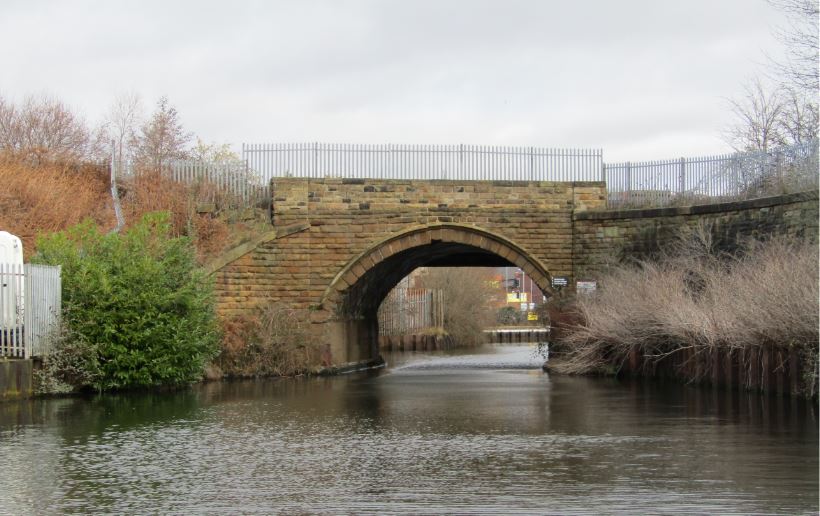
21st Century Makeover For Victorian Structure
23/01/2020 - posted in Bridges, Civils, HBPW News, Inspections, RailA South Yorkshire bridge that originally came to life when the rail revolution was still in its infancy, is set to get a modern day makeover more than 150 years after Victorian engineers first cut the red ribbon.
The Sheffield & South Yorkshire Navigation Bridge, so named because it crosses a canal of the same name, is located in Mexborough, midway between Doncaster and Rotherham.
It is a single span underbridge which carries the twin tracks of the Barnsley Branch passenger and freight line, over the canal which runs beneath and alongside the River Don.
However, inspections showed that the structure was rapidly nearing the end of its life and that remedial work was required to bring it up to modern standards.
Engineer Ross Hardy takes up the story. “The structure comprises three distinct sections including the original but now largely redundant stone arch, which was built around 1850.
“The central section, constructed 30-40 years later, consists of five wrought iron longitudinal plate girders, each varying in length and height,which support transverse timber deck. Allied to this, and also built pre 1892, is a side bridge that carries a foot access to the towpath for the canal.”

He said that it was complex combination but, in some ways, the challenge was straightforward.
“Whilst masonry arches are incredibly durable and frequently last longer, a bridge typically has a viable life of around 120 years and the central section was now reaching the end of that life. It therefore required strengthening and extensive refurbishment, including replacement of the timber deck, to allow it to remain used or the structure could be replaced. When considering the costs and disruption to the railway that either solution would need, all agreed that replacement was the more sensible option.
“That has meant developing an engineering plan to remove the five longitudinal plate girders and timber deck in order to replace them with a new steel and concrete composite deck.”
The new deck, made up of two ‘modules’, each featuring two longitudinal steel plate girders connecting into new concrete deck slabs, will be installed at the end of February next year.
“The prefabricated deck modules will be lifted individually and joined together during the possession with a longitudinal ‘stitch’ of fast curing concrete,” said Ross. “We’ve used weathering steel for the main girders which means that these will not require painting in the future, which is important when access from the canal is so difficult. The original abutments will also be used since they are in good condition and have a much longer shelf life, potentially lasting hundreds of years.”
The existing arch span will be waterproofed and new drainage installed at either side of the structure .
“Masonry repairs will be carried out to the existing abutments and the new works are designed to have a shelf life of 120 years as well as being free from major maintenance for a minimum of 25 years,” added Ross.
